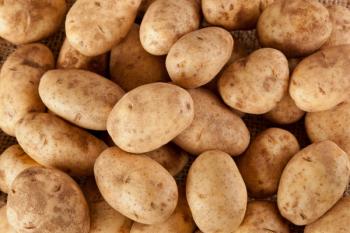
Detecting Blood on Interfering Substrates Using a Novel Raman Spectroscopy Method
According to new research, two new Raman spectroscopy approaches, reducing a spectrum complexity (RSC) and multivariate curve resolution combined with the additions method (MCRAD), can detect bloodstains on a multitude of well-known substrates, with RSC proving to be the more effective technique.
Confirmatory blood tests have been the standard procedure for forensic analysts when detecting body fluid traces at crime scenes to reconstruct the DNA of potential suspects. In particular, the Teichmann and Takayama hemoglobin crystal tests and immunological tests, such as ELISA and LDH assays, are often used for these purposes.
However, the current analytical methods being used do have some limitations. The confirmatory blood tests are susceptible to generating false positives because these tests can be influenced by environmental oxidants and interferents. These tests also cost an inordinate amount of money, are labor-intensive, and require a special laboratory environment to be conducted properly.
As a result, several spectroscopic methods, such as UV-vis absorption, fluorescence, and infrared (IR) spectroscopy, have been shown to have great potential for detecting and identifying body fluid traces directly at crime scenes. Because these techniques are nondestructive and have portable commercial instruments available that can be used to perform these techniques, they could be applied at the crime scene and alleviate many of the limitations of current laboratory confirmatory blood tests.
Raman spectroscopy has a long history of being used in law enforcement when conducting investigations. This technique is often used for drug identification, paint and fiber analysis, and trace evidence. Combining chemometric analysis with Raman spectroscopy has shown to be useful in determining the time since deposition, differentiating human and animal blood, and providing phenotypic information about suspects based on the analysis of blood and other body fluids.
Because body fluid traces can be affected by the chemistry of underlying surface (substrate) the fluid iss deposited on, it is imperative that Raman spectroscopy be able to overcome the challenge of the interference signal resulting from the sample substrate. A popular method to mitigate this problem, restoring the body fluid by a sample soluting in water, is ineffective and destructive because the addition of water to dried body fluid negatively impacts the accuracy and integrity of Raman spectra.
Both MCRAD and RSC methods have implemented what was coined as a “one-per-step” approach to decompose the Raman spectra, and both were successful in allowing a target component (body fluid) to be restored without substrate interference (1). However, the RSC method detected blood with a probability of close to 100%, whereas MCRAD demonstrated poor ability to detect blood on certain substrates, such as polyester, cotton fabric, and denim.
In summary, the research team explored two new Raman spectroscopy techniques, RSC and MCRAD, and their ability to detect body fluid traces on several of the most common substrates. MCRAD combines MCR with the addition method, and it showed that it can restore a target component from an experimental spectrum of body fluids dried on an interfering substrate. Meanwhile, RSC was shown to be a more effective method for detecting body fluid traces because of the method’s improved robustness, which was shown by observing the decomposition of Raman spectra of bloodstains on several different substrates.
Reference
(1) Kistenev, Y.V.; Borisov, A.V.; Samarinova, A.A. et al. A novel Raman spectroscopic method for detecting traces of blood on an interfering substrate. Sci Rep 2023, 13, 5384.
Newsletter
Get essential updates on the latest spectroscopy technologies, regulatory standards, and best practices—subscribe today to Spectroscopy.




